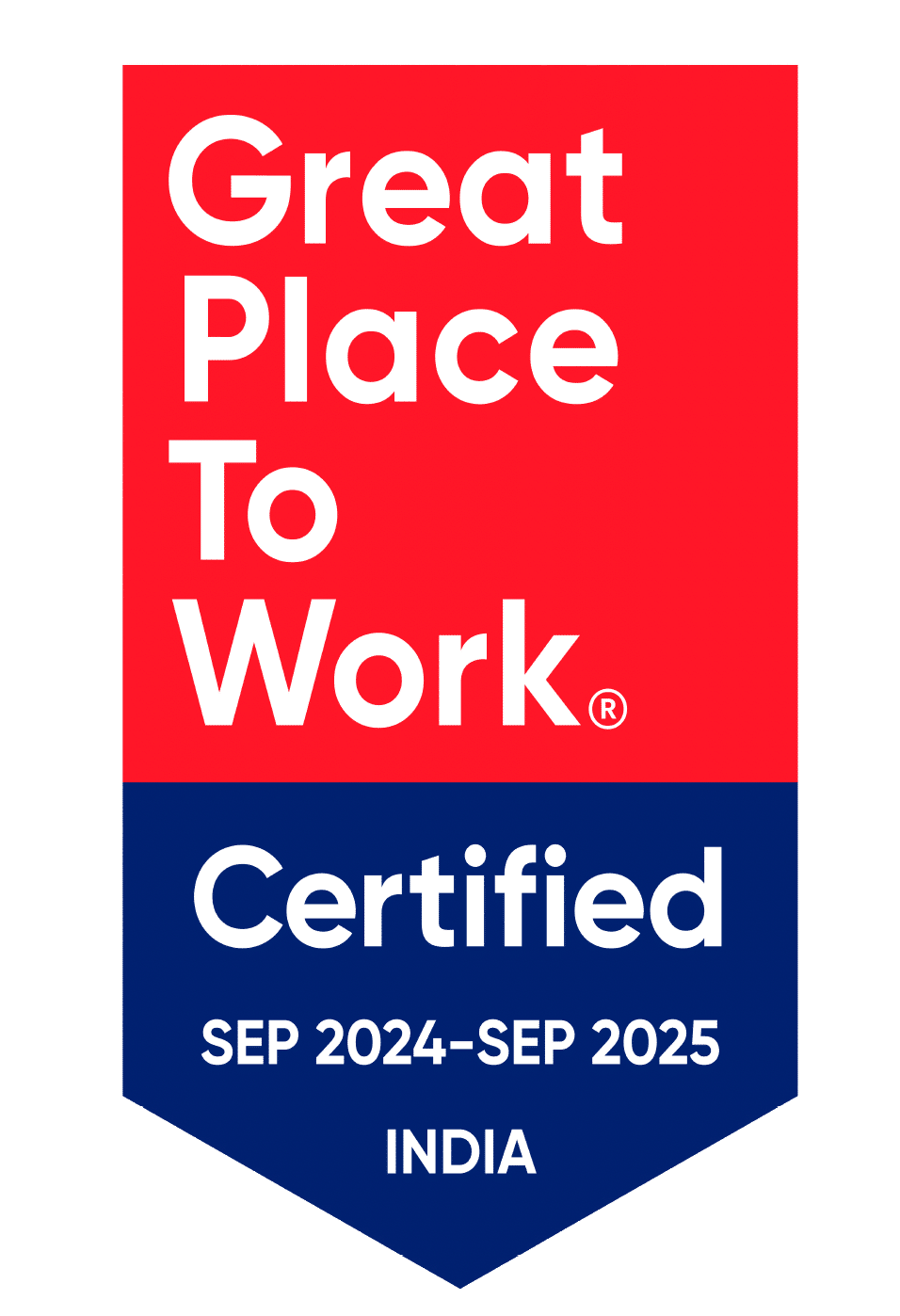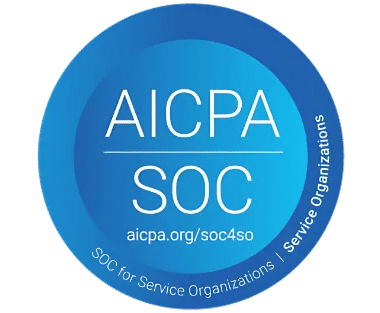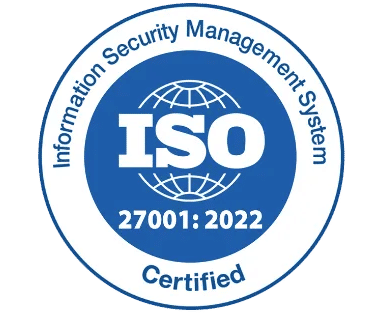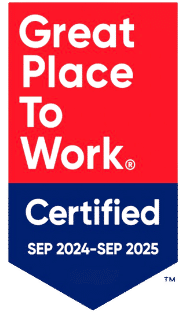Employee Onboarding Automation | Reliable, Secure, Proven
_6TJe6UK1O.png)
According to a 2024 report by SHRM (Society for Human Resource Management), 77% of organizations in the US have adopted some form of employee onboarding automation to streamline their hiring processes. The same report highlights that companies using automated onboarding solutions experience a 54% increase in new hire productivity and 30% higher retention rates within the first year (SHRM, 2024).
The Shift to Automated Employee Onboarding
Gone are the days of manual paperwork, endless emails, and clunky processes. In today’s fast-paced hiring landscape, employee onboarding automation has become a game-changer for HR professionals. By integrating reliable and secure automated solutions, companies are not only saving time but also building a more consistent, engaging, and compliant onboarding experience.
In this blog, we’ll explore how employee onboarding and similar automation tools can:
1.Reduce onboarding errors and increase efficiency.
In traditional, manual onboarding processes, human errors are inevitable. Whether it’s misfiled documents, incorrect data entry, or missed steps, even minor mistakes can lead to compliance issues, confusion, and delays. Employee Onboarding Automation solves this by introducing standardized workflows, automated data collection, and error-checking mechanisms, significantly reducing the risk of mistakes.
How Automation Reduces Errors:
Automated Data Collection:
- New hires enter their own information into a secure self-service portal, minimizing the risk of HR staff inputting incorrect details.
- Pre-filled forms reduce typos, inaccuracies, and missing fields.
- Automated validation ensures that required fields are not skipped.
Pre-Scheduled Workflows:
- Automated onboarding platforms like Employee Onboarding use predefined workflows that guide HR teams and new hires through a consistent process.
- No more missed steps the system automatically prompts for required actions, such as document submission or training completion.
Real-Time Error Notifications:
- Automation tools detect missing or incomplete information and send real-time alerts to HR managers.
- This proactive error correction reduces compliance risks and keeps the process on track.
Efficiency Gains Through Automation:
- Time-Saving Automation: Routine tasks such as document collection, e-signatures, and task assignments are handled automatically, allowing HR staff to focus on more strategic activities.
- Faster Onboarding: Automated processes reduce the time-to-productivity by ensuring that new hires complete required steps promptly.
- Improved Accuracy: Automation ensures that all data is consistent and error-free, reducing the need for manual corrections.
According to a 2024 report by SHRM, companies using automated onboarding solutions experience 25% fewer data entry errors and 50% faster completion of onboarding tasks.
2.Improve security with centralized, protected data.
Employee onboarding involves handling sensitive information, including social security numbers, banking details, and confidential employee records. Manually managing this data increases the risk of data breaches, unauthorized access, and compliance violations. Automation helps protect sensitive data through centralized, encrypted, and access-controlled systems.
How Automation Enhances Security:
Centralized Data Storage:
- Automated onboarding platforms like Employee Onboarding 365 store all employee data in a single, secure, and centralized location, reducing the risk of data fragmentation.
- HR managers can easily access and manage records, ensuring data integrity and consistency.
Data Encryption and Protection:
- All employee information is encrypted during transmission and storage, protecting it from unauthorized access.
- Multi-layer encryption ensures that sensitive data remains secure, even during system transfers.
Role-Based Access Control:
- Automation platforms allow HR managers to set role-based permissions, ensuring that only authorized personnel have access to specific data.
- For example:
- HR staff can view personal details.
- IT teams can access provisioning data.
- Managers only see performance-related information.
Audit Trails and Compliance:
- Automated systems generate detailed audit logs that track every interaction, from data entry to modifications.
- This improves transparency and helps companies meet compliance regulations like GDPR, HIPAA, and SOC 2.
Benefits of Secure Onboarding Automation:
- Reduced Data Breach Risks: Centralized and encrypted systems prevent unauthorized data access.
- Improved Compliance: Automated systems generate digital records that comply with HR regulations.
- Enhanced Data Integrity: Automated processes minimize human interference, preserving data accuracy.
According to IBM’s 2024 Cost of Data Breach Report, companies using automated HR systems experience 43% fewer security incidents related to employee data.
3.Deliver a consistent and proven onboarding experience.
Consistency is key to effective onboarding, especially when companies are hiring at scale or across multiple locations. Manual processes often lead to inconsistent experiences, with some new hires receiving incomplete or delayed information, which can impact their first impression and productivity. Employee Onboarding Automation ensures that every new hire goes through the same structured, high quality onboarding process.
How Automation Ensures Consistency: -
Standardized Onboarding Workflows:
- Automation platforms allow HR teams to create and replicate standardized workflows for all new hires.
- Every employee receives the same training, documentation, and policy acknowledgments, ensuring a uniform experience.
- Predefined templates guarantee that no essential steps are missed, even during high-volume hiring.
Automated Communication and Task Reminders:
- With automation, personalized welcome emails, task reminders, and follow-up notifications are sent automatically.
- This ensures that every new hire receives consistent communication and clear instructions.
- Timely reminders reduce the risk of missed deadlines or incomplete tasks.
Consistency Across Locations:
- For companies with multiple offices or remote teams, automation ensures that every new hire follows the same onboarding process, regardless of location.
- This maintains brand consistency and reduces regional variations.
Benefits of a Consistent Onboarding Experience:
- Improved Employee Confidence: Standardized onboarding makes new hires feel more confident and prepared.
- Stronger Brand Impression: A smooth, professional onboarding process strengthens the company’s reputation.
- Better Compliance: Consistent workflows ensure that all legal and policy requirements are met uniformly.
With Employee Onboarding, HR managers can create pre-configured templates for different departments or roles, ensuring that every new hire receives the same quality of experience.
A 2024 Gartner report revealed that companies with consistent onboarding processes experience a 58% increase in new hire retention during the first year.
What Is Employee Onboarding Automation?
Employee onboarding automation refers to the use of technology to streamline and standardize the process of integrating new hires into an organization. Instead of relying on manual paperwork, repetitive tasks, and inconsistent procedures, employee onboarding automation leverages digital tools to create a faster, more efficient, and consistent onboarding experience.
Here’s how onboarding automation simplifies HR processes:
- Digital Document Management:
- New hires can complete, and e-sign forms online, eliminating the need for physical paperwork.
- Automated platforms ensure that all required documents are collected, stored securely, and easily accessible.
- Automated Task Workflows:
- Pre-scheduled workflows automatically trigger tasks, such as sending welcome emails, assigning training modules, and initiating IT setup.
- This ensures no step is overlooked, creating a consistent experience for every new employee.
- Real-Time Notifications and Reminders:
- Automated reminders notify new hires and HR teams of pending actions, such as completing forms or attending orientation.
- This reduces delays and ensures onboarding stays on track.
- Centralized Data and Reporting:
- Onboarding automation platforms centralize employee data, making it easier to track progress, generate reports, and ensure compliance.
- HR managers can monitor key metrics, such as time-to-productivity and completion rates.
- Improved Accuracy and Compliance:
- Automated data entry reduces human errors, ensuring accurate information collection.
- Built-in compliance checks help organizations adhere to legal and regulatory requirements.
By employee onboarding automation, companies can save time, reduce administrative burdens, and provide a smoother, more engaging experience for new hires setting them up for success from day one.
What Is Employee Onboarding Automation?
In today’s fast-paced business landscape, first impressions matter especially when onboarding new employees. Yet, many companies still rely on outdated, manual processes that are slow, error-prone, and inefficient. These traditional methods create roadblocks that hinder productivity and frustrate both HR teams and new hires.
In contrast, automated onboarding offers a faster, more secure, and consistent experience, helping organizations save time and resources.
Traditional Onboarding vs. Automated Onboarding: Key Differences
- Time Efficiency:
Manual onboarding requires HR to handle paperwork, data entry, and follow-ups by hand, leading to delays. In contrast, automated processes use digital forms, e-signatures, and task workflows to significantly speed up the process. - Accuracy:
Manual methods are prone to human errors, such as incorrect data entry or missing documents. Automated onboarding ensures consistent and accurate data collection through pre-filled forms and real-time validation. - Consistency:
With traditional onboarding, experiences can vary depending on individual HR practices. Automated systems standardize the process, delivering a uniform experience for all new hires. - Compliance & Security:
Paper-based records and unsecure data handling increase compliance risks. Automated systems enhance data protection with secure storage, role-based access, and built-in compliance checks. - Employee Experience:
Manual onboarding often involves cumbersome paperwork and delays, which can reduce engagement. Automated solutions offer a seamless, self-service experience, boosting satisfaction and helping new hires feel more confident from day one.
The Pain Points of Manual Onboarding
Even the most organized HR teams struggle with the inefficiencies of manual onboarding. Here’s how it creates unnecessary challenges:
1.Frequent Errors and Inconsistencies:
Manual data entry is highly prone to mistakes misspelled names, incorrect social security numbers, or outdated contact information. These errors lead to compliance issues and time-consuming corrections.
2.Time-Consuming and Repetitive Tasks:
HR teams spend hours processing paperwork, sending reminders, and manually tracking new hire progress. This takes time away from more strategic HR functions like talent development.
3.Inconsistent New Hire Experience:
Without standardized workflows, onboarding experiences vary by department or location. New employees may miss out on important training or policy reviews, leading to confusion and misalignment.
4.Security and Compliance Risks:
Handling sensitive documents manually increases the risk of data breaches. Misplaced or incomplete forms can result in compliance violations, creating legal vulnerabilities for the company.
5.Delayed Productivity:
New hires often face delays in receiving equipment, access credentials, or system logins due to slow, fragmented processes. This reduces their ability to contribute effectively from day one.
How Employee Onboarding Automation Improves Efficiency and Accuracy
Automating your employee onboarding process significantly boosts efficiency and reduces costly errors. Unlike manual methods, which rely on repetitive data entry and scattered communication, automation streamlines the entire workflow. By eliminating human touchpoints in routine tasks, organizations can onboard new hires faster and more accurately.
Here’s how automation enhances efficiency and accuracy:
Reduces Errors:
- Automated Data Collection: New hires can enter their information directly into digital forms, minimizing the risk of typos or inconsistencies.
- Pre-filled Fields: Employee details automatically populate from existing records, preventing duplicate or incorrect entries.
- Validation Rules: Built-in checks ensure all required fields are completed accurately before submission.
Accelerates the Onboarding Process:
- Pre-Scheduled Workflows: Automated systems trigger sequential tasks (e.g., sending offer letters, assigning training modules) without manual follow-ups.
- Real-Time Notifications: HR teams receive instant alerts when forms are submitted, documents are signed, or actions are pending, ensuring nothing falls through the cracks.
- Self-Service Portals: New hires can complete paperwork, access company resources, and enroll in benefits at their own pace, reducing back-and-forth delays.
Improves Data Consistency and Security:
- Centralized Document Storage: All forms, contracts, and compliance documents are securely stored in one place, reducing the risk of lost or misplaced files.
- Automated Compliance Checks: The system verifies that all legal and policy-related documents are properly signed and filed, ensuring regulatory compliance.
By leveraging these automation features, companies can create a smoother, faster, and error-free onboarding experience, boosting both HR efficiency and employee satisfaction.
Strengthening Security Through Centralized and Protected Data
Protecting sensitive employee information is a critical aspect of the onboarding process. Traditional, paper-based methods or scattered digital files increase the risk of data breaches, misplaced documents, and unauthorized access. By centralizing and securing employee data through automation, companies can significantly enhance security and ensure compliance with privacy regulations.
Here’s how automated onboarding strengthens data protection:
Enhanced Data Security:
- Encryption: Automated systems use encryption protocols to protect sensitive employee information, such as social security numbers, bank details, and personal records. This ensures that data remains secure during transmission and storage.
- Role-Based Access: Access to employee data is restricted based on user roles. Only authorized HR personnel can view or modify sensitive information, preventing unauthorized access.
- Secure Document Storage: All forms, contracts, and personal records are stored in a centralized, cloud-based platform with advanced security measures, reducing the risk of lost or stolen files.
Improved Compliance and Accountability:
- Audit Trails: Automated systems generate detailed logs of all data-related activities, tracking who accessed, modified, or shared information. This creates transparency and ensures compliance with regulations like GDPR, HIPAA, or CCPA.
- Automated Data Retention and Disposal: The system follows pre-set retention policies, automatically archiving or deleting data based on company guidelines, reducing exposure to unnecessary data risks.
Minimized Human Error:
- Consistent Data Handling: By automating data collection and storage, companies reduce the risk of errors caused by manual entry, misplaced documents, or inconsistent filing practices.
By centralizing and safeguarding employee data with automated systems, organizations can protect sensitive information, maintain compliance, and build trust with their workforce.
Delivering a Consistent and Reliable Onboarding Experience
Consistency is key to creating a positive and professional employee onboarding automation experience—especially for companies hiring at scale. When organizations rely on manual processes, new hires often face inconsistent experiences based on the department, location, or individual HR practices. This lack of standardization can lead to confusion, missed steps, and varying levels of preparedness.
Automating the onboarding process ensures that every new employee receives the same structured, reliable experience, regardless of their role or location.
Here’s how automation promotes consistency:
Standardized Workflows:
- Automated systems follow pre-defined onboarding workflows, ensuring that every new hire completes the same steps in the same order. This eliminates inconsistencies caused by human error or varying departmental practices.
- Key tasks such as document submission, training assignments, and IT setup are triggered automatically, preventing delays or missed steps.
Uniform Onboarding Across Locations:
For companies with multiple offices or remote teams, automated onboarding ensures that employees receive the same training materials, compliance documents, and company policies, regardless of their location.
- This consistency reinforces company culture and ensures all employees are aligned with organizational standards.
Reliable Task Tracking:
- Automated platforms provide real-time tracking and status updates, allowing HR teams to monitor each new hire’s progress.
- Notifications and reminders keep everyone on schedule, ensuring no step is overlooked.
Enhanced Employee Experience:
- Consistent, clear onboarding reduces confusion for new hires, helping them feel more confident and prepared from day one.
- A reliable process also improves employer branding by showcasing the company’s professionalism and attention to detail.
By delivering a consistent and standardized onboarding experience, companies can improve efficiency, reduce errors, and ensure every new employee starts on the right foot no matter where they are located.
The Tangible Benefits: Increased Retention and Productivity
Investing in automated onboarding doesn’t just streamline processes it also delivers measurable business outcomes. Companies that automate their onboarding experience see higher new hire retention, improved productivity, and greater overall satisfaction. By eliminating inefficiencies and creating a seamless transition for new employees, organizations can reduce turnover and boost long-term performance.
Here’s how automation drives real results:
Higher New Hire Retention:
- According to a study by Brandon Hall Group, organizations with a strong onboarding process improve new hire retention by 82%. Automation plays a key role by ensuring a consistent and positive experience, which helps employees feel more connected from day one.
- Real-world example: A mid-sized tech company reduced its first-year turnover by 27% after implementing automated onboarding, thanks to standardized welcome workflows and better support during the initial months.
Improved New Hire Productivity:
- Research from Glassdoor shows that effective onboarding increases new hire productivity by over 70%. Automation accelerates task completion by providing employees with faster access to training materials, system credentials, and company resources.
- Measurable outcome: Companies using automated onboarding see employees become fully productive up to 35% faster than those using manual processes.
Reduced Administrative Burden for HR:
- By automating repetitive tasks like document collection, e-signatures, and compliance checks, HR teams spend less time on administrative work and more time on employee engagement and development.
- Real-world example: A financial services firm reported saving 15 hours per new hire by automating its onboarding process, allowing HR staff to focus on strategic initiatives.
Enhanced Employee Experience:
- Automated onboarding provides a smoother, more engaging experience, which directly impacts employee satisfaction. According to Sapling HR, 69% of employees are more likely to stay with a company for three years if they experience great onboarding.
- Measurable outcome: Companies that automate onboarding report a 30% increase in new hire satisfaction scores, leading to stronger morale and lower early turnover rates.
By embracing automation, organizations not only reduce administrative inefficiencies but also create a structured, welcoming experience that increases retention and boosts productivity from day one.
Best Practices for Successful Onboarding Automation
To maximize the benefits of automated onboarding, HR managers need to implement and optimize their systems strategically. Simply automating tasks isn’t enough—effective onboarding automation requires thoughtful customization, clear communication, and continuous improvement.
Here are some best practices to ensure a successful and seamless onboarding automation process:
success.
1. Customize Workflows to Fit Your Organization’s Needs
- One-size-fits-all workflows won’t deliver the best results. Tailor onboarding steps based on job roles, departments, and locations.
- Create role-specific task sequences, such as IT setup for remote employees or certification training for specific departments.
- Incorporate personalized welcome messages, relevant resources, and team introductions to make new hires feel valued.
2. Use Automated Reminders and Notifications
- Prevent delays and missed steps by setting up automated reminders for both HR teams and new hires.
- Send real-time notifications for pending documents, required e-signatures, or incomplete tasks.
- Use milestone reminders (e.g., first-week check-ins or 30-day reviews) to keep the onboarding process on track.
3. Leverage Self-Service Portals for New Hires
- Provide new employees with access to self-service portals where they can complete tasks, access resources, and review company policies at their own pace.
- Include interactive onboarding checklists that guide them through each step, ensuring nothing is overlooked.
4. Collect and Act on New Hire Feedback
- Use automated surveys or feedback forms to gather insights from new employees about their onboarding experience.
- Identify areas for improvement, such as unclear instructions or bottlenecks in the process, and refine workflows accordingly.
- Continuous feedback helps optimize the onboarding experience over time.
5. Ensure Data Security and Compliance
- Use automated surveys or feedback forms to gather insights from new employees about their onboarding experience.
- Identify areas for improvement, such as unclear instructions or bottlenecks in the process, and refine workflows accordingly.
- Continuous feedback helps optimize the onboarding experience over time.
6. Monitor and Measure Performance Metrics
- Track key onboarding metrics, such as time-to-productivity, task completion rates, and new hire retention.
- Use these insights to identify inefficiencies and make data-driven improvements to the process.
By following these best practices, HR managers can create a streamlined, consistent, and engaging onboarding experience boosting new hire satisfaction and driving long-term organizational success.
Future Trends: What is Next for Employee Onboarding Automation?
Employee onboarding automation is rapidly evolving, with new technologies transforming how organizations welcome and integrate new hires. Emerging trends such as AI-powered chatbots, predictive analytics, and personalized learning paths are set to redefine the onboarding experience, making it smarter, more engaging, and highly efficient.
Here’s a look at what’s next for onboarding automation:
1. AI-Powered Chatbots for Real-Time Assistance
- AI chatbots are becoming a key feature in onboarding platforms, providing instant support to new hires.
- These virtual assistants can answer common questions, guide employees through forms, and direct them to relevant resources—reducing the need for HR intervention.
- Chatbots also offer 24/7 availability, ensuring new hires get timely assistance, even outside regular business hours.
2. Predictive Analytics for Smarter Decision-Making
- Onboarding platforms are increasingly using predictive analytics to enhance the process.
- By analysing data from previous hires, companies can identify patterns that influence retention, performance, and engagement.
- For example, predictive insights can flag new hires at risk of early turnover, enabling HR to proactively offer additional support.
3. Personalized Learning Paths for Skills Development
- Automated onboarding will continue to focus on personalized employee experiences.
- AI-driven platforms can create customized learning paths based on a new hire’s role, skills, and career goals.
- Tailored training modules and adaptive content ensure employees receive relevant and effective learning materials, boosting engagement and competency.
4. Enhanced Integration with HR Tech Ecosystems
- Future onboarding solutions will offer deeper integrations with HR systems, including performance management, payroll, and talent development platforms.
- Seamless data sharing across systems will provide a holistic view of the employee journey, from onboarding through career growth.
5. Increased Focus on Data Privacy and Security
- As data privacy regulations tighten, onboarding platforms will adopt more advanced security features.
- Automated compliance checks, encrypted document storage, and customizable access controls will become standard to protect sensitive employee information.
6. Gamification and Interactive Experiences
- To boost engagement, companies will incorporate gamification elements into onboarding, such as achievement badges, interactive quizzes, and milestone rewards.
- These features make the experience more enjoyable and help new hires retain important information.
By embracing these future trends, companies can create smarter, more personalized, and data-driven onboarding experiences—improving retention, productivity, and overall employee satisfaction.
Conclusion
To stay competitive and provide a world-class employee experience, organizations need to invest in reliable onboarding automation solutions. Employee Onboarding offers a robust, customizable platform designed to streamline the entire process—from digital paperwork and real-time notifications to secure data management and personalized learning paths.
Now is the time to embrace onboarding automation. By adopting a modern solution like Employee Onboarding 365, you can create a consistent, error-free, and engaging experience that sets your employees and your business up for long-term success.
Frequently Asked Questions
What is the main benefit of automating employee onboarding?
The primary benefit is increased efficiency. Automation reduces manual, repetitive tasks, speeds up the process, and ensures consistency helping new hires become productive faster. It also improves accuracy by minimizing human errors.
How does automated onboarding improve employee experience?
Automated onboarding offers a seamless and consistent experience by providing digital forms, self-service portals, and real-time notifications. New hires can complete tasks at their own pace, access resources easily, and receive timely support.
Is employee data secure in an automated onboarding system?
Yes, reputable onboarding platforms include data encryption, role-based access, and audit trails to protect sensitive employee information. Automated compliance checks also help ensure adherence to data privacy regulations.
Can onboarding automation be customized for different roles or locations?
Absolutely. Most platforms allow HR teams to create tailored workflows based on job roles, departments, or office locations. This ensures every new hire receives relevant and role-specific onboarding materials.
How does automation help with compliance during onboarding?
Automated systems streamline compliance tasks by pre-filling forms, verifying document accuracy, and maintaining secure digital records. Automated reminders ensure that new hires complete required compliance steps on time, reducing legal risks.
Table of Contents
- 1. What Is Employee Onboarding Automation?
- 2.How Manual Onboarding Slows Your Business Down
- 3.How Employee Onboarding Automation Improves Efficiency and Accuracy
- 4.Strengthening Security Through Centralized and Protected Data
- 5.Delivering a Consistent and Reliable Onboarding Experience
- 6.The Tangible Benefits: Increased Retention and Productivity
- 7.Best Practices for Successful Onboarding Automation
- 8.Future Trends: What’s Next for Employee Onboarding Automation?
- 9. Conclusion










_svxLrd-8yH.png)

_2VYSFUTN5m.png)

_JiluXJRGNl.svg)

_2djTKNocf.png)





_Rapo0hRMBy.png)










